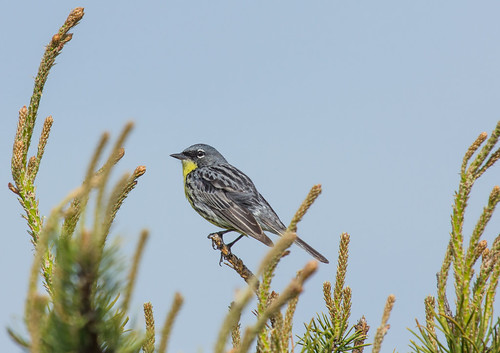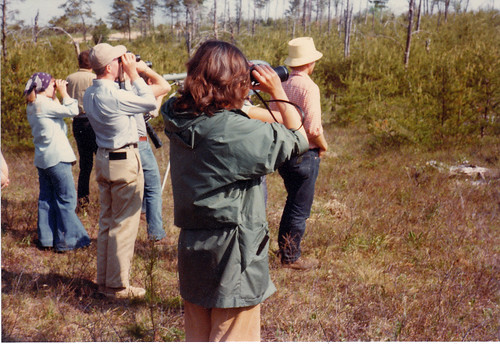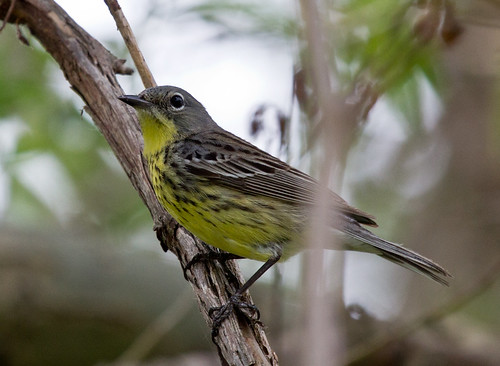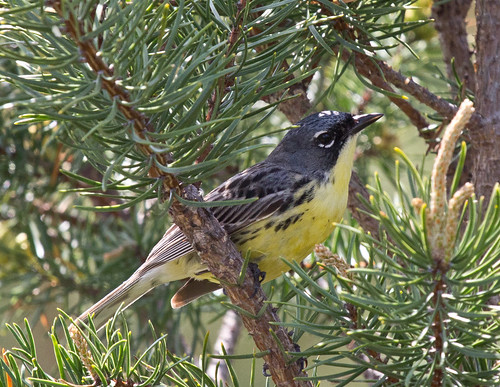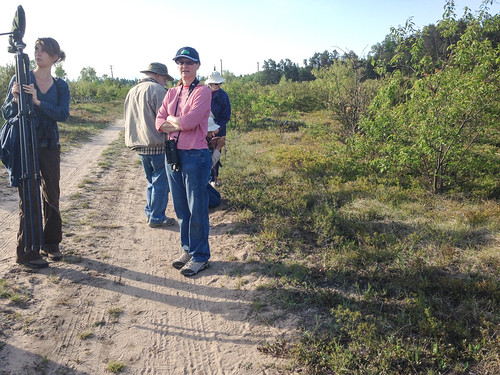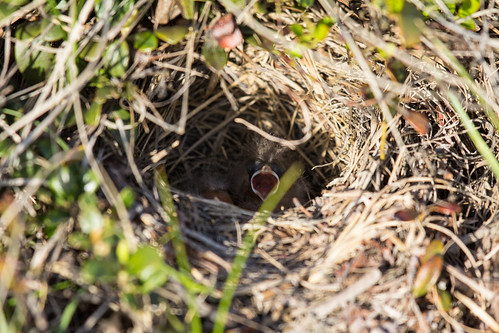One of the best things about doing my Conservation Big Year is looking at birds I’ve already seen a dozen times or more, yet somehow not nearly enough, such as Kirtland’s Warbler.
I saw my first one ever on June 6, 1976. That year marked the nation’s Bicentennial, and Kirtland’s Warbler was officially named Michigan’s Bicentennial Bird. At the time it was critically endangered—only 167 singing males were found two years before, in 1974. The people protecting it were trying to get the population up to 200 by the Bicentennial, which they just barely succeeded in doing. This rarest warbler on the continent was in dire trouble. Fortunately, that was right after the Endangered Species Act kicked in, and the combination of research into the causes of the species’ imperilment and management to maintain essential habitat and remove Brown-headed Cowbirds turned the trend around. Last year, 2012, the species count reached an all-time high of 2063 in Michigan alone, and now the species has spread a bit into Wisconsin and Ontario.
Since 1976, I’ve seen Kirtland’s Warbler on several other occasions. I brought my whole family to see Kirtland’s Warbler 20 years ago en route on a family vacation in New England, but even though the population was fairly high at that point, it was late in the nesting cycle, when males were too busy feeding young to be out where anyone could see them. The northern route between Duluth and Oberlin, Ohio, where our daughter went to school, went right past Grayling, so Russ and I stopped a few times. And I’ve been lucky enough to see Kirtland’s Warblers a couple of times during spring migration at Magee Marsh at the Black Swamp Bird Observatory in Ohio, and once during fall migration at Lake Kissimmee State Park in Florida.
This year, first thing in the morning on June 8, I went on a guided trip in Grayling, Michigan, sponsored by the US Fish and Wildlife Service and Michigan Audubon Society, to see the warblers. These well advertised trips make it easy for anyone to see this endangered species without putting pressure on the birds during their vulnerable breeding season. The birds had been back for well over a week—some more than two weeks—so most of the territorial boundaries had been settled and pairs were getting down to incubating eggs or even raising nestlings. Males were still singing fairly vigorously but usually staying hunkered down rather than perching conspicuously atop the trees. We heard quite a few on our tour, but managed halfway decent looks at only one male, and needed a spotting scope to see him well.
After the tour, I spotted one male singing atop a tree right next to a major highway, so I got some good photos of him, and went to another spot later that day and the next morning where I could hunker down in hopes that other males would venture close enough for photography.
Because Kirtland’s Warbler is endangered, we were legally required to stay on paths and roads, off the actual nesting habitat, but I never walk off paths anyway—I’m petrified of stepping on a bird, toad, insect, or other tiny creature without realizing it. On our guided walk, a Vesper Sparrow suddenly darted through our group and I knew we’d passed her nest. Sure enough, just inches from the path was a beautiful nest, tucked deep into the weeds. A footstep to the side of the path could have crushed the four tiny nestlings and none of us would have been the wiser.
Even though I always stay on paths and roads, I’m lucky and patient. A few Kirtland’s Warblers were nice and cooperative, so I got lots of photos, including some of one bird singing with a large caterpillar in his beak.
I made time for Kirtland’s Warblers this year only because of my Conservation Big Year, but ironically, had to leave after just a day and a half because of my Conservation Big Year—the next species were beckoning. I felt sad saying goodbye to this lovely, splendid bird, but happy to be leaving with photos, sound recordings, and wonderful memories.
